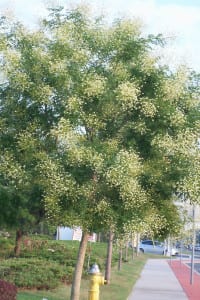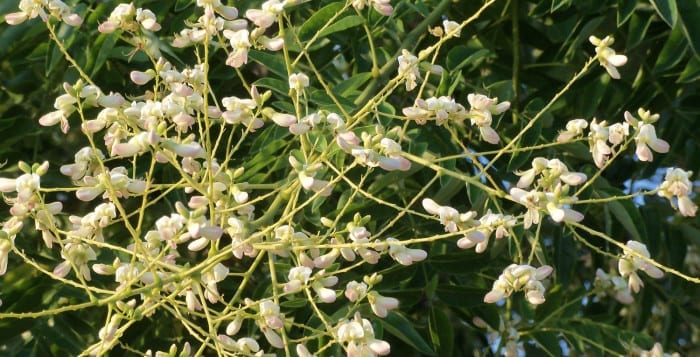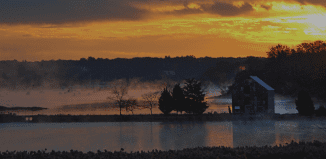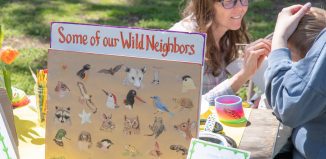The Japanese pagoda: a late summer flowering tree
By Ellen Barcel
I love it when people send me photos of unknown plants. Sometimes I know right off what it is and can help them with added information. Sometimes it takes some research, but it’s always fun. Recently, a gardening friend sent me some photos of trees covered in fragrant white flowers in mid-August.
Trees flowering this late in the season are unusual. Most flowering trees bloom in spring, bringing a profusion of color to that season. Some are followed by edible fruit, others by seed pods. Some, especially those grown for their showy flowers, are sterile. So, what was this beautiful tree? The tree in question was a Japanese pagoda tree.

This tree, also known as the Chinese scholar tree, is a native a China, grown in the United States as a specimen tree. Styphnolobium japonica (also known as Sophora japonica) is in the pea family, Fabaceae, but unlike others in the family, is not a nitrogen-fixing tree. It’s a deciduous tree, easily growing up to 60 or more feet tall. It does well in a wide range of soil pH conditions, ranging from 4.5 (extremely acidic) to 8, which is alkaline, so, ideal for Long Island’s acidic soil.
Colorado State Cooperative Extension Service notes that the tree is hardy in zones 4 to 8 (Long Island is zone 7) and prefers a sunny location. The rapidly growing tree tolerates city conditions (i.e., pollution), meaning that it will do well planted along roadsides. It tolerates heat and drought conditions, making it ideal for Long Island with its occasional drought conditions. They describe the flowers as 10- to 15-inch panicles of “creamy-white, pea-like flowers” that survive for about a month. The flowers are followed by pods that “resemble strings of beads,” similar to garden peas. The pods are filled with yellow seeds.
My friend noted how many bees (and other insects) were flying around the tree, visiting the fragrant flowers. The tree provides light shade when young, but a mature tree produces dense shade. Keep this in mind when selecting the tree. Are you looking for dappled shade or dense shade?
Other plants in the pea family include the golden chain tree (see my column of June 18, this year), clover, sweet peas, lupine, beans and, of course, edible garden peas.
Next week we’ll talk about another late summer flowering tree, the mimosa.
Ellen Barcel is a freelance writer and master gardener. Send your gardening questions to [email protected] reach Cornell Cooperative Extension and its Master Gardener program, call 631-727-7850.







